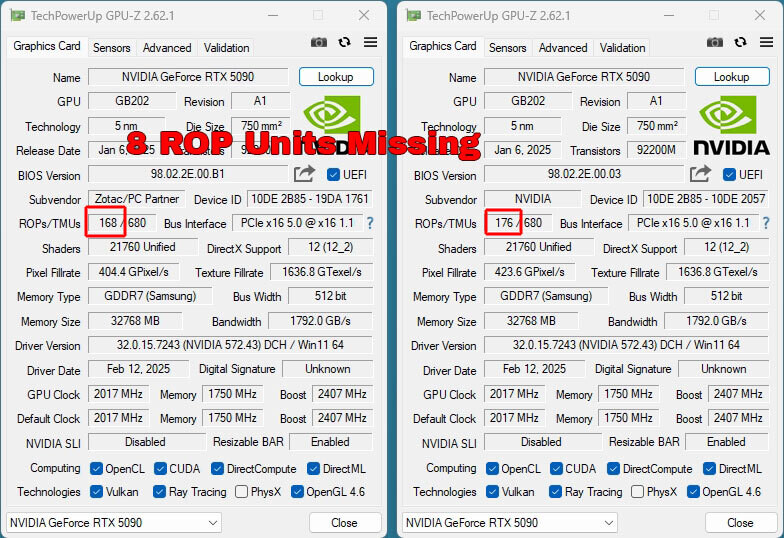1 - Agree, but not a huge deal because nobody buying one was born yesterday and if you know enough to watch the presentation then you know enough to not believe it's as powerful as a 4090
3 - Really? It was always assumed to be just a refresh because it's on the same node and the design is pretty much the same. It was never going to be a huge performance uplift over 4000 series
5 - Where was 'great availability' promised? I don't recall seeing that anywhere.
7 - They stopped making 40 series so they could make 50 series, they're on the same node. What do you expect?
10 - PCIe 5.0 is working fine here. It's also a motherboard issue not a GPU issue. The cards are designed to 5.0 spec, but if the motherboard is doing it wrong how can you blame the GPU?
1, 3 and 5: all all from Jensen's CES presentation, i.e. from this video
Here I have compiled the relevant timestamps:
TOPS, RT & shader speedup vs. Ada 39:07
the infamous "5070 == 4090 thanks to AI" 42:00
"producing at very large scale availability starting January" 42:50
Now we can probably agree that that all of that looked very suspicious - maybe with some hints of truth but then considering Jensen's reputation
of basically overselling the improvements with every generation, yeah clearly I was very skeptical of anything he said.
And as it turned out later on all of them turned out to be 100% lies. Not just overselling it but 100% lies.
Even if we were to somehow agree that Jensen saying lies shouldn't be a "big deal" let me ask from different point of view.
Why from the manufacturer's perspective should it be such a big deal to tell the truth for once?
7: I would expect that well timed switch to new gen products shouldn't cause extreme shortages of old AND new products at the same time. If they switched production to new products then where are they? At the very least they could have prepared a buffer of older cards if the were expected shortages of new cards. Also when they introduced 40 series they had the opposite problem that there were too many 30 series card on the market which was not good for their profits. Therefore I would speculate that the current market development is more of a consequence of them intentionally going for the opposite extreme (to avoid profit loss) instead of some production continuity on similar node problems.
10: Glad to hear PCIe 5.0 is working OK on at least some combinations of cards and motherboards. But I don't think at this time it's so clearcut that the blame lies with motherboard manufacturers. I.e. there were some problems with PCIe raisers which didn't work on 50 series even if in MB was set to PCIe 4.0 That could point to some signaling problems on the cards themselves. And since the FE cards have their PCIe connector on a separate PCB connected to the main PCB only via thin cables it's not difficult to imagine this could potentially be cause of signaling issues. I think we need to wait for official Nvidia statement for this one. The one we got so far says they are investigating it, not that it's clearly supposed to be MB manufacturers problem.

www.techpowerup.com



